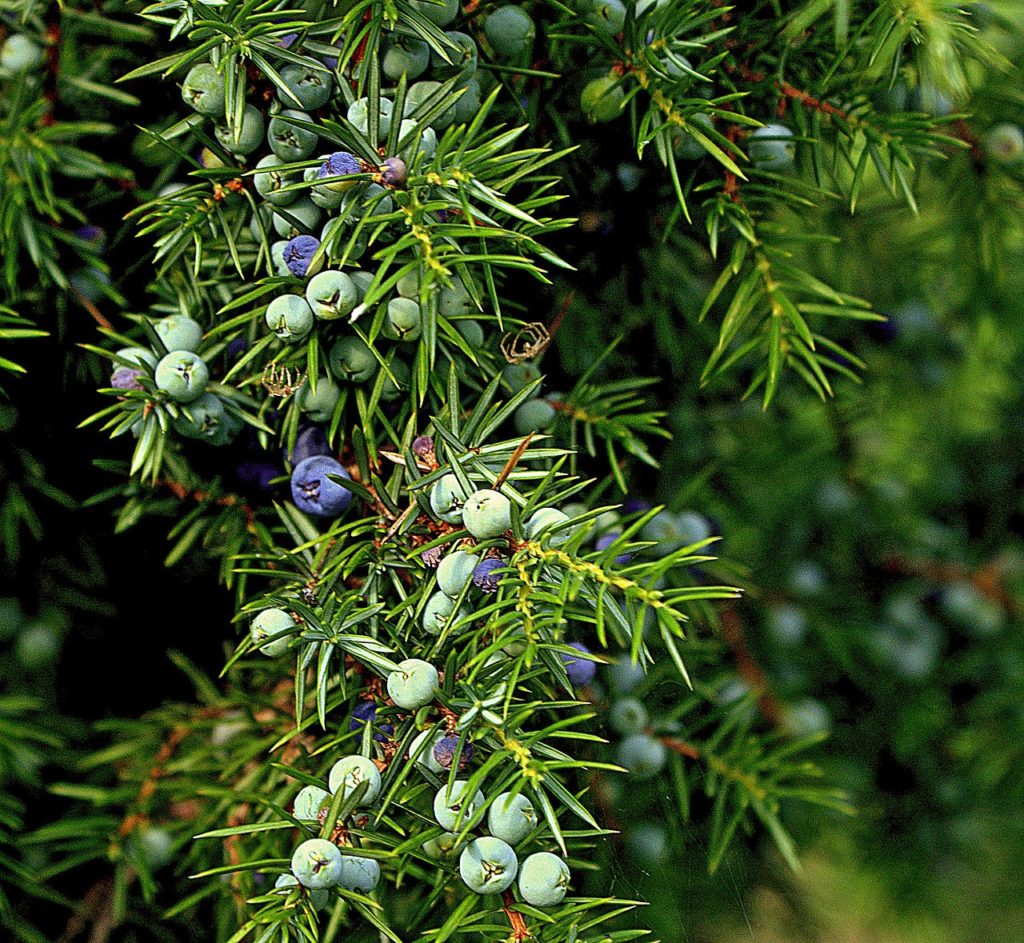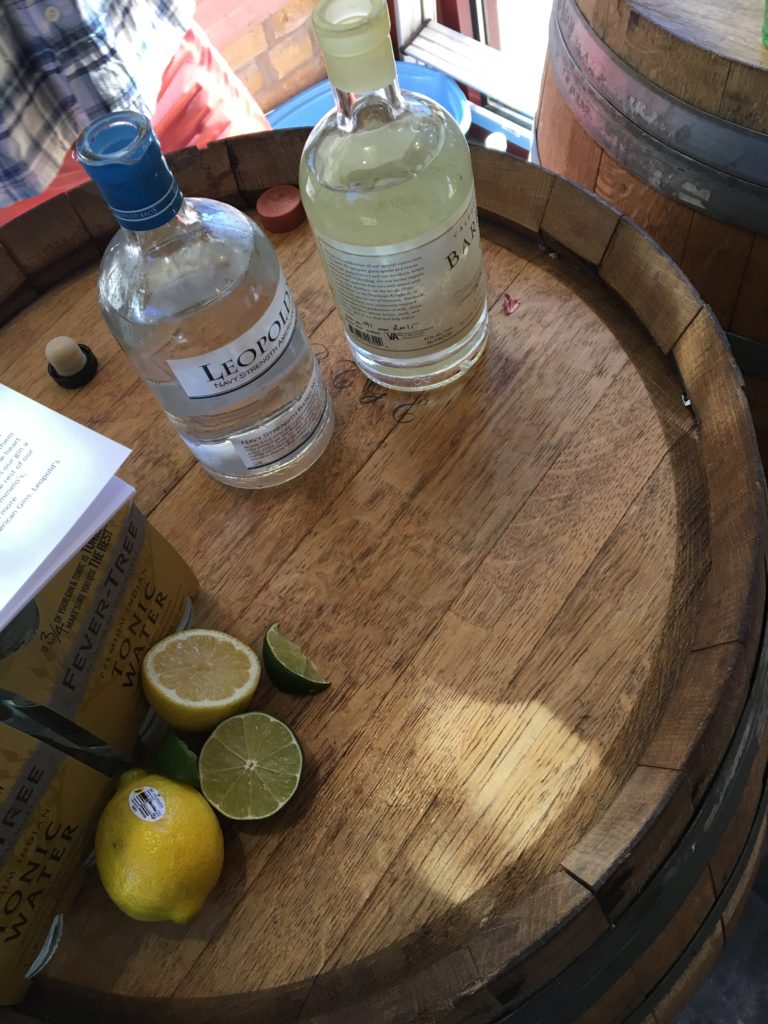The Colorful History & Flavor of Gin
Written by Kevin Brady
Click here to see our list of gins you can buy in the store!
Vodka by definition is a distilled neutral tasting spirit. Gin is first vodka, but is then given a botanical known as juniper added for flavoring. Yes, that’s juniper, as in juniper berries. So again, making gin is like making flavored vodka, but the botanicals used for flavor are all natural.
The word gin actually means juniper. It originated in what we now know as the Netherlands. The Dutch call it “jenever,” the Belgians call it “genever,” the French “genievre,” and in Latin it is “juniperus.”

Juniper seems to be first used in 1269 for health-related tonics according to a Dutch publication. The botanical later found its way into a distilled spirit commonly called “Aqua Vitae” which means “The Water of Life.”
During the Thirty Years’ War (1618-1648). The Protestants and Catholics were facing off for the final time. The Dutch, Sweden, Great Britain and Germany made up the protestant forces. The catholic forces were made up of the Spanish, Bohemia, and the Austrian Habsburgs. Why is this significant for the history of gin? Before going to battle, the British noticed their Dutch companions drinking a juniper-based spirit. The Libation had a calming effect while raising their spirit of bravery. The British soon joined their Dutch brothers, calling this newfound concoction “Dutch Courage.” Naturally after the war, British soldiers brought the drink back to their homeland.
With the victory of the Protestants in the Thirty Years’ War, Protestantism was firmly entrenched in England and the people soon dethroned the catholic monarch James II. The Dutch, protestant monarch William III of Orange and his wife Mary replaced James II. By the way, Mary was James’ daughter and William was his son-in-law. It’s a long story…
Once on the throne, William sought to reward and gain favorable support from the aristocrats who possessed large amounts of land and hordes of grain. In 1689, William deregulated the distillation of grain spirits, the production of liquor, and its sale to the public. Naturally, the spirit of choice in the Dutch courts was “jenever,” thus it quickly became the choice for the general public. Gin then replaced brandy and the more expensive ales. Soon everyone was distilling, as licensing for production and distribution only took 10 days.
Fast forward 41 years to 1730. 7000 shops were selling only spirits as gin became the drink of preference for the poor. In 1736, the British government sought to curb “The Gin Craze” with taxes and levies, but this led to riots in the streets and underground “Gin Mills.” These illegal drinking establishments could be identified by carvings of a black cat, much like a family crest, which was visible outside pedestrian walkways. These gin mills served what is known as “Old Tom Gin,” which is sweeter than normal gin due to added sugar. The taxes and levies which caused all of this were eventually repealed in 1742. 1751 saw a “Gin Act.” This act was different. It was drafted with the help of distillers and licensed retailers. The excise duties and price increases were considered reasonable and it was enforced by the magistrates.
 So when did these other botanicals arrive? And what’s up with the tonic and gin? The royal navy mixed gin with lime and lemon to help prevent scurvy. They also used angostura bitters to solve sea-sickness. Tonic and quinine were commonly blended to battle malaria, and with British and Dutch expansion into the tropics, they turned to navy strength gin to offset the horrible bitterness of quinine. Thus, the gin and tonic was born.
So when did these other botanicals arrive? And what’s up with the tonic and gin? The royal navy mixed gin with lime and lemon to help prevent scurvy. They also used angostura bitters to solve sea-sickness. Tonic and quinine were commonly blended to battle malaria, and with British and Dutch expansion into the tropics, they turned to navy strength gin to offset the horrible bitterness of quinine. Thus, the gin and tonic was born.
Interestingly, the original martini cocktail was made with equal parts gin and Italian dry vermouth. It was never vodka! By the way, a “London Dry Gin” is not necessarily from London. It is not a designation like you see with wine. It is a descriptive style depicting its dry style vs. that of “Old Tom Gin.” However, Plymouth Gin actually is from Plymouth.
Today we are blessed with amazing gins. As more craft distillers have come on the scene many are creating unique one-of-kind styles with amazing flavor profiles. With the expansion of craft distilleries so too has the craft of mixology. Mixologists is a relatively new term for many of us. Mixologists are replacing what we commonly know as bartenders leading to an explosion of new and exotic drink recipes. Many times now, you will see whiskey and gin being used together in one drink, no longer leaving you to choose one over the other. So when you’re out and about ask to see “The Drink Menu” in restaurants and recipes at your favorite liquor store.
*Much of my resources were acquired via the internet and its blogs as well. -Kevin
Click here to see our list of gins you can buy in the store!


